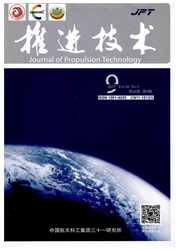

 中文摘要:
中文摘要:
针对自适应循环发动机(ACE)的一种布局形式,利用所建立的部件级性能仿真模型,对其多种工作模式下典型工作点的匹配机理及工作特性进行仿真和分析。研究结果表明,节流比TR选择对地面起飞推重比和高空高速性能均产生较大影响;可变Flade风扇的出现使得发动机从不加力向加力模式转变时可采用固定的喷口喉道面积;通过多个可调几何的协同调节,ACE发动机循环模式的选择具有更多的灵活性,总涵道比的变化幅度更大(0.28~1.43,地面起飞工作点);相同的推力水平下,与单涵模式相比,三涵模式的单位耗油率在亚声巡航工作点(H=11km,Ma=0.8)大约降低9.1%,在超声巡航工作点(H=11km,Ma=1.5)大约降低2.3%。
 英文摘要:
英文摘要:
A configuration of an Adaptive Cycle Engine (ACE) and the mechanism of its variable ge- ometries were presented. An ACE simulation program was developed and utilized to analyze the matching principle and performance of various modes of ACE at typical operation points. Results show that throttle ra- tio is a critical design parameter influencing not only the engine thrust ratio at take-off but also the perform- ance at high-altitude and high-speed missions. The utilization of variable Flade (Blade on Fan) makes it possible to fix the nozzle throat area when reheating the engine. Through the combined modulation of various variable geometries, more cycle modes are available and the variation of bypass ratio is greater(from O. 28 to 1.43 at take-off). Given the same thrust level, the specific fuel consumption of triple-bypass mode is less than the one of single-bypass mode, around 9. 1% during subsonic cruise (H = 11 km, Ma = 0.9 ) and 2.3 % during supersonic cruise (Ma = 1.5 ) , respectively.
 同期刊论文项目
同期刊论文项目
 同项目期刊论文
同项目期刊论文
 期刊信息
期刊信息
